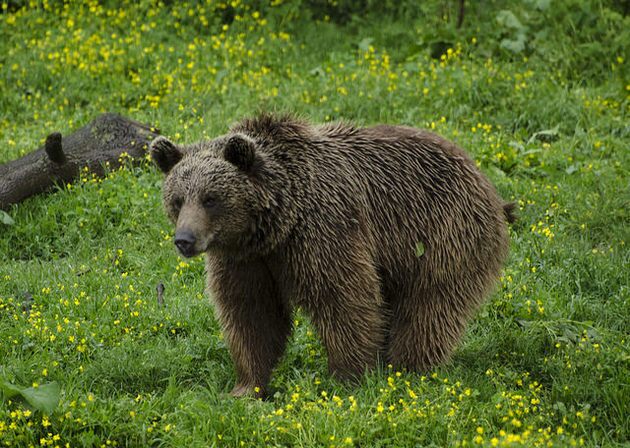People and Large Carnivores Can Live Together, Study Suggests

Good news for Californians who like having wolves, bears, bobcats, and pumas around: a study by 50 European wildlife biologists suggests that given public support and a few laws protecting them, large carnivores can coexist with large numbers of people.
The study, published Friday in the journal Science, reveals that 46 of Europe's 50 nations have populations of four large mammalian carnivores, with about of the third of the densely populated continent providing habitat for the animals.
The study looked at European populations of gray wolves, brown bears, lynx, and wolverines, and found that despite centuries of persecution, shifting public attitudes toward predators over the last half century, and resulting laws designed to give the animals a little breathing room, have resulted in predator population recovery. In fact, crowded Europe's predators are actually doing better than their counterparts in relatively spacious North America.
For instance, the authors estimate that Europe is home to about 17,000 brown bears (Ursus arctos). That's about ten times the number of grizzlies remaining in the United States. Grizzly bears are so closely related to their European brown bear cousins that biologists can't quite agree on whether they should be categorized as different subspecies.
The study also looked at gray wolves (again, the same species as the wolves currently driving North American anti-predator groups into a tizzy, wolverines (ditto), and the Eurasian lynx (Lynx lynx), a close relative of the smaller North American bobcat.
Overall, Europe has about twice the number of the large predators studied as does North America. The authors point out that the European Union's Habitats Directive, a far-reaching law roughly equivalent to our Endangered Species Act, has a lot to do with predator recovery. European nations not belonging to the EU, and thus not subject to the habitats directive, aren't showing the kind of predator population recovery that member nations can boast.
It's food for thought. Compared to much of Europe, California and the West boast far more suitable habitat for large predators: there are comparatively large unbroken stretches of roadless area within a hundred miles of California's largest cities. If the example of Europe is at all relevant, we in California could co-exist with wolves, bobcats and wolverines, and perhaps even a new population of brown bears -- if only our laws and attitudes would catch up with those of our friends across the pond.